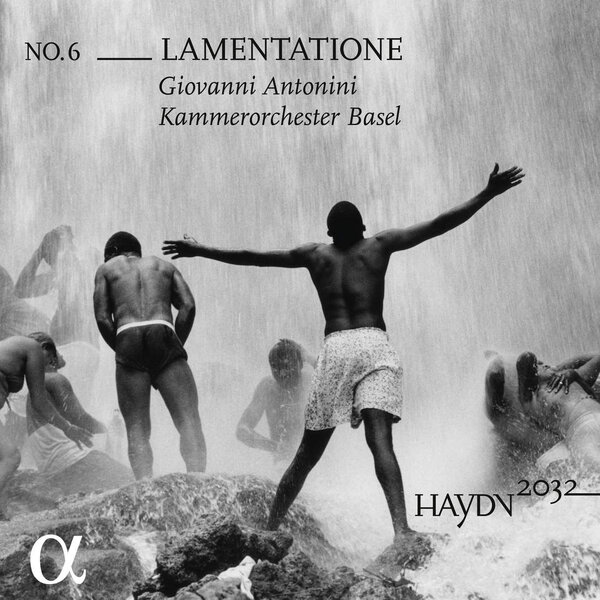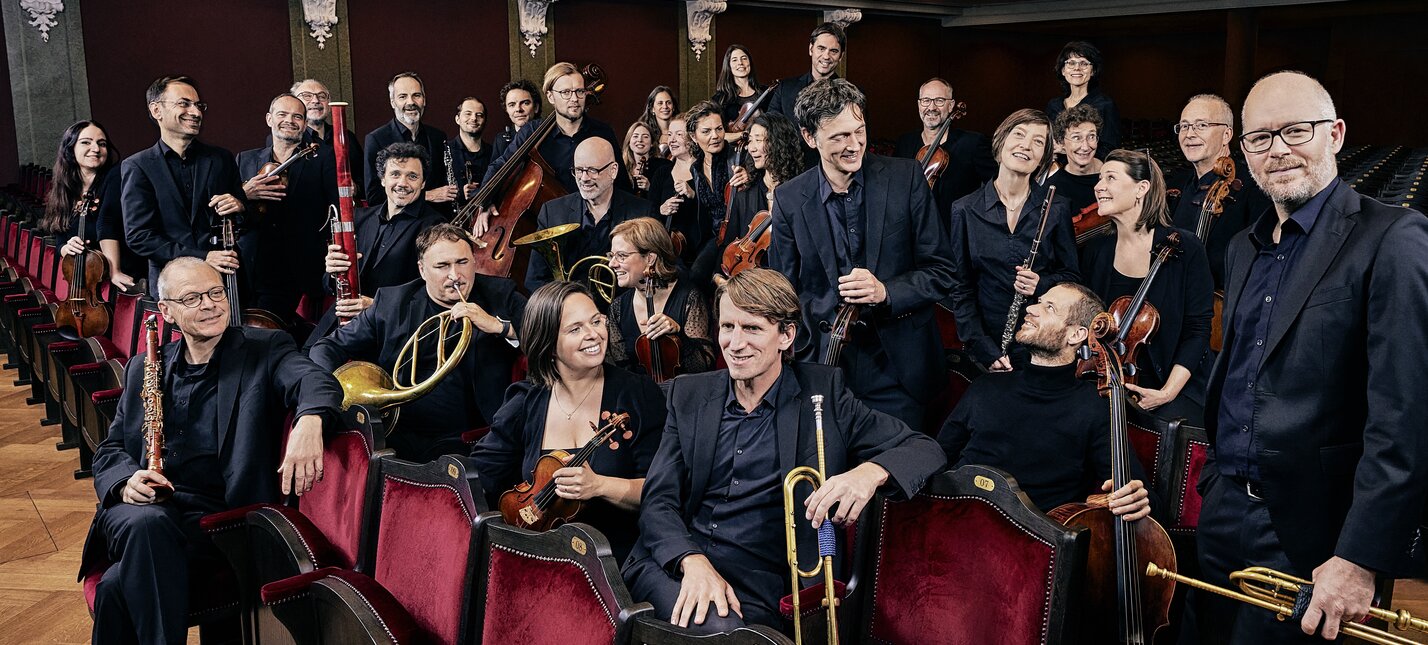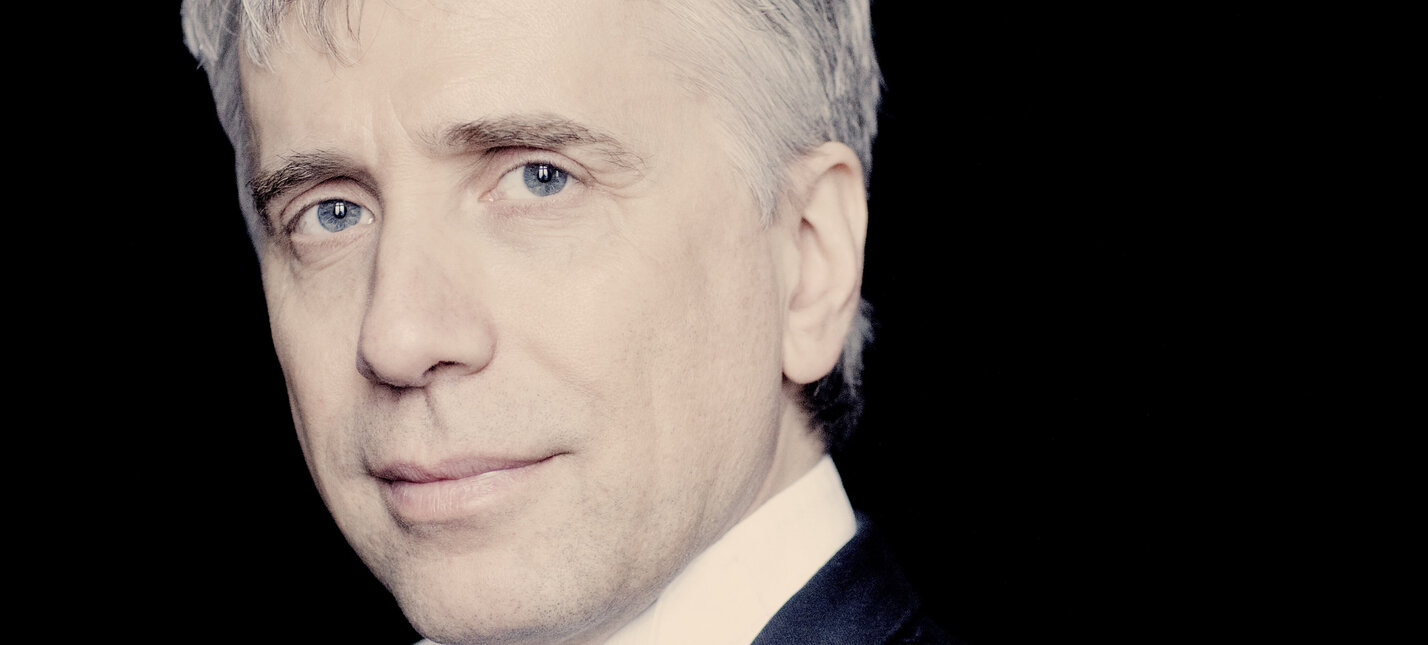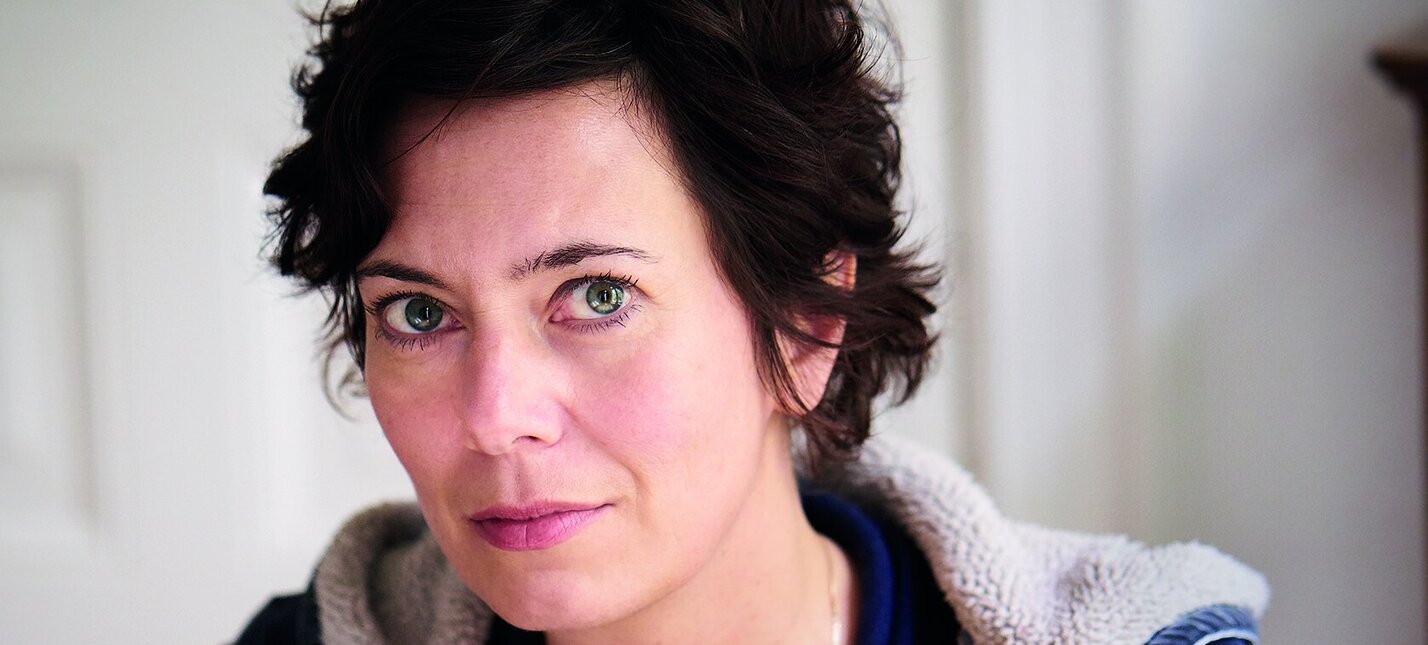NO.6 __LAMENTATIONE

Basel Chamber Orchestra
Giovanni Antonini, conductor
Eva Menasse, writer
Abbas, photographer
Symphonies No. 3, No. 26 "Lamentatione", No. 30 and No. 79
The origins of the LAMENTATIONE project spring from the idea of contributing a musical programme to the five hundredth anniversary of the Reformation in 1517, which, in line with the overarching goal of our concert series, was once again to consist primarily of symphonic works by the composer Joseph Haydn. As it happens, though, Haydn, like the family tradition from which he came, did not at all belong to the Protestant faith, but was on the contrary so deeply rooted in the Catholic environment of the Habsburg Empire that his compositional legacy should be considered from the perspective of the Papal Counter-Reformation, rather than that of the fundamental renewal of religious history set in motion half a millennium ago by the publication of the Ninety-five Theses of Dr Martin Luther.
In the spirit of peace and understanding between religions (as well as between denominations), the programmers soon focused their attention on the symphonic works in which Haydn drew themes and motifs from the common musical heritage of the Catholic and Protestant churches, namely Gregorian chant. This is notably the case in a symphony in C major from 1765 and its sister work in D minor, some three years younger, which kindly provided us with its nickname to serve as the project’s title.
Nevertheless, this sixth episode in the Haydn2032 series may also be viewed in other lights than the ‘interdenominational’ background adumbrated above. When set alongside L’HOMME DE GÉNIE, which was first performed in October 2016 and evoked Haydn’s encounter with Joseph Martin Kraus, one of the great forgotten figures among late eighteenth-century composers, it forms a kind of musical diptych. For here we juxtapose Haydn’s ‘chorale symphonies’ with the German-Swedish court Kapellmeister’s arrangement of the orchestral prelude to Die Pilgrime auf Golgatha, a Passion oratorio by Johann Georg Albrechtsberger. In a further connection, Symphony no.79 here concludes the presentation of a trilogy of Haydn symphonies from 1784 that we commenced in the earlier programme.
Program
Joseph Haydn (1732–1809): Symphony No.30 in C Major, Hob. I:30 „Alleluja“ (1765)
Allegro / Andante / Finale. Tempo di Menuet più tosto Allegretto
SYMPHONY NO.30 IN C MAJOR HOB. I:30 ‘Alleluja’ (1765)
Time of creation: [spring] 1765
Allegro / Andante / Finale. Tempo di Menuet più tosto Allegretto
Christian Moritz-Bauer
Although we have only a few written testimonies to Haydn’s attitude towards the church and religious observance – after all, except for those years in which he was active as a choirboy in Hainburg and at St Stephen’s Cathedral in Vienna, he was to serve only secular princes throughout his life – his musical manuscripts, which are always headed ‘In nomine Domini’ and/or concluded by ‘Laus Deo’, betray a faithful Catholic, albeit one marked by the spirit of the Enlightenment and the reform measures of Joseph II. The fact that hardly any sacred works from Haydn’s pen have survived before 1766 is probably due primarily to the strict division of responsibilities between the first and second Kapellmeisters at the court of the Esterházy princes. Haydn’s contract of employment dated 1 May 1761, for example, stipulated that he ‘shall depend upon and be subordinated to Gregorius Werner, in [the latter’s] capacity as First Kapellmeister, in respect of choral music . . . But in all other matters, whenever music is to be performed, everything related to that music, in general and in particular, shall be under the responsibility of the said Vice-Kapellmeister’, that is, of Haydn.
No wonder, then, that the newly appointed ‘Vice-Kapellmeister’ and ‘House Officer’ soon roused the envy of the already long-serving Gregor Joseph Werner on account of the prominent position accorded to the newcomer, a feeling that eventually came to a head in an official reprimand to Haydn on the part of his employer, the Regulatio Chori Kiss-Martonensis (Regulation for the Kapelle of Eisenstadt) dated 3 November 1765. The ‘inventory of all the instruments and music to be found in the choir-loft’ ordered therein, coupled with the injunction to ‘apply himself to composition more diligently than heretofore’, led Haydn, among other things, to draw up the first catalogue of his works, the so-called Entwurf-Katalog, which he initially wrote in his own hand. A mere glance at the forty symphonies he had composed to date – including the eight or nine early works from his first post with Count Morzin – must have produced a well-nigh overwhelming impression. In any case, the relevant pages of the catalogue were soon to disappear mysteriously.
The series of symphonies from the year 1765 begins with a work of special quality which, moreover, is filled with religious allusions. The fact that the exposition of the Symphony in C major Hob. I:30 quotes the Gregorian Alleluia from the liturgy for Holy Saturday (in the sequence of notes G - C - D - E - C - D - C), but initially conceals it in barely perceptible fashion among the middle voices, may be regarded as a gesture of respect for Kapellmeister Werner’s only remaining sphere of influence. As the work progresses, however, the gesture seems increasingly to be forgotten. For, at the beginning of the recapitulation, the plainchant melody suddenly stands starkly revealed in the wind tutti with an all too sparse string accompaniment. A further, far less profane thought suggests itself – that of the miracle of the Easter Vigil . . .
Further proof of the composer’s skill is provided by the Andante, in which a flute renders itself conspicuous as a soloist. Although it begins by playing its part in a well-behaved manner, the instrument subsequently dares to break away from the movement’s dotted rhythms and short-breathed phrases and demonstrate its virtuosity with glittering semiquaver figuration.
Given that the ‘Alleluja’ Symphony ends with a dancelike Tempo di Menuet, it is a moot point whether the conjecture that it was once used in an ecclesiastical or liturgical setting is a plausible one. Yet, in spite or perhaps because of the temporary darkness that shrouds the second of the two Trio sections, we feel the notion should be treated generously.
to the shop
Joseph Haydn (1732–1809): Symphony No.3 in G Major, Hob. I:3 (1761)
Allegro / Andante moderato / Menuet – Trio / Finale. Alla breve
SYMPHONY NO.3 IN G MAJOR HOB. I:3 (1761)
Time of creation: till 1762 [1761]
Allegro / Andante moderato / Menuet – Trio / Finale. Alla breve
Christian Moritz-Bauer
In the wake of his appointment as vice-Kapellmeister to the Esterházy princes – more precisely, between June and December 1761 – Haydn wrote his famous ‘Times of Day’ symphonies (Le Matin, Le Midi, Le Soir, nos. 6-8), with their concerto grosso-like solos for his orchestra’s first-desk players, but also, probably just before that, two more works in the genre, one in D major and one in G major. A defining moment of the latter, Hob. I:3, is its unusual concentration of contrapuntal techniques – a phenomenon that is prominent not only in the Alla breve fugue of the work’s Finale, but also in the opening Allegro, with its soggetto-like theme, and the two middle movements. One reason for this may well have been Haydn’s efforts to demonstrate his abilities in the field of polyphonic part-writing, on which Gregor Werner for one, then his hierarchical superior, saw himself as a certain authority.
When Haydn wrote contrapuntally, it was generally in ‘free counterpoint’, in which – unlike the so-called stile antico – it was permissible to observe the rules of dissonance and consonance in a more relaxed manner according to the tastes of the composer and his audience. For example, the steady stride of the violins and oboes, one note to a bar, at the beginning of the first movement resembles a cantus firmus, while the Menuet in canon between high and lower strings does full justice to its French name – in terms of melodic writing and timbral combinations, it is very reminiscent of the style of Jean-Philippe Rameau (1683-1764). So far, so good. However, the twenty-nine-year-old Haydn rises to top form and thoroughgoing independence in the finale, which James Webster considers to be an early masterpiece, since it ‘trumps’ all that has gone before ‘with a remarkable synthesis of fugue and sonata style’.1 But equally worthy of mention is the dynamic structure of the fugal writing: the entire exposition is held down to pianissimo until the first orchestral tutti, before it moves towards the extremely effective conclusion of the work in an alternation of forte and piano blocks and with the aid of a short pedal point.
1 James Webster, ‘From Vienna to Eszterháza, c.1760-63’, booklet note to the three-CD set ‘Haydn Symphonies, volume 2’ (London: Decca-L’Oiseau-Lyre, 436 592-2, 1993), p.20.
to the shop
Joseph Haydn (1732–1809): Symphony No.26 in d Minor, Hob. I:26 „La Lamentatione“ (1768)
Allegro assai con spirito / Adagio / Menuet – Trio
SYMPHONY NO.26 IN D MINOR HOB. I:26 «Lamentatione» (1768)
Time of creation: till 1770 [1768]
Allegro assai con spirito / Adagio / Menuet – Trio
Christian Moritz-Bauer
Whereas in the symphony that opened our programme it was an Alleluia belonging to the Holy Saturday liturgy that was interwoven into the orchestral texture, Haydn quotes not one but two plainchant melodies in the work under discussion here. In the Symphony Hob. I:26 – written about three years after that work, despite its numbering ten places earlier in the chronology of Haydn’s oeuvre – the melodies in question appear in both of the first two of the three movements. One of these reciting tones is linked with a performance of the Passion narrative in which the ‘roles’ are shared among several readers, while the other is associated with the Lamentationes Jeremiae Prophetae, the Lamentations of the Prophet Jeremiah, sung at the Nocturns of Maundy Thursday, Good Friday and Holy Saturday.
Because of its motivic references to the Passion of Christ, it has often been suggested that individual movements of Hob. I:26 (or even the whole work) were originally employed in an ecclesiastical setting, for example in the liturgy or in the context of devotional exercises. However, such conjectures have not yet been proven – at least not with regard to the situation in Eisenstadt. Elsewhere, surviving performance material strongly argues in favour of such a use. The source preserved at the Augustinian monastery of Herzogenburg, for example, is entitled ‘Passio et Lamentatio’. In the course of the second theme of the Allegro assai con spirito we meet several inscriptions in the second violin part (which carries the plainchant melody) redolent of the protagonists of a Passion play: ‘Evang:[elista]’ (bar 17, with a declamatory character), ‘Christ:[us]’ (bars 26-31, piano with striding minims) and ‘Jud:[aei]’, the Jews (bars 35-37, with hammering quaver figuration and a sudden first violin motif that rushes up the scale).
The nickname conventionally applied to the symphony today also occurs in several contemporary copies of Haydn’s now lost autograph, either in the Italian nominative form ‘La Lamentazione’ or in the Latin ablative singular form ‘Lamentatione’.
In terms of character, Hob: I:26 has been assigned to the canon of Haydn’s supposedly ‘Sturm und Drang’ works on the basis of its minor key, the intensity of the emotions expressed therein and, last but not least, the fact that its date of composition is (relatively) close to those of the ‘Trauer’ and ‘Farewell’ Symphonies (Hob. I:44 and 45), the Symphony in B major Hob. I:46 and ‘La Passione’ Hob. I:49.
The musical grieving process initiated by the Passion (semiquaver triplets in the first violins as an instrumental counterpart to the Lamentation tone in the solo oboe and violino secondo parts) continues in the ensuing Adagio, whose ‘special tone colour’ (with the woodwind tutti taking over the melodic line at the start of the recapitulation, further enriched harmonically by well-placed Neapolitan sixth chords), according to Ludwig Finscher, already seems to portend ‘the impending miracle of Easter’.1
Even without plainchant quotations, the minuet finale has a special intensity. From the very beginning, its austere mood alternating between minor and major, its Neapolitan harmonies and its rhythmic ambiguities generate a mood that is still sombre yet also restores optimism.
1 Vgl. Ludwig Finscher: Joseph Haydn und seine Zeit. Laaber Verlag, Laaber, 2000, S. 267.
to the shop
Joseph Haydn (1732–1809): Symphony No.79 in F Major, Hob. I:79 (1784)
Allegro con spirito / Adagio cantabile – Un poco allegro / Menuet. Allegretto – Trio / Finale. Vivace
SYMPHONY NO.79 IN F MAJOR HOB. I:79 (1784)
Time of creation: [end of 1784]
Allegro con spirito / Adagio cantabile – Un poco allegro / Menuet. Allegretto – Trio / Finale. Vivace
Christian Moritz-Bauer
The Symphony in F major, the last of the trilogy written in 1784 along with nos. 81 and 80, has repeatedly had to endure more or less harsh criticisms in its reception history, especially with regard to the design of the two outer movements. For example, Ludwig Finscher speaks of ‘nothing but conventional, barely individualised formulas’1 in the Allegro con spirito, while A. Peter Brown mentions ‘a touch of gypsy music’ and ‘something of a grinding organ’2 in the inner sections of the rondo finale. Everything is ‘enjoyable, but no more than that’.3
By contrast, the British music journalist Anthony Hodgson penned a very eloquent defence speech for Hob I:79:
The most unusual feature of the first movement is a single downward phrase of pure Mozart; this apart, glowing melody is underpinned by a firm staccato bass. The Adagio Cantabile which follows is simple, touching and quietly optimistic. At length the gentle forward motion rests, and suddenly a delightful, quietly hastening section marked un poco allegro bustles in. Isolated from this movement it would be difficult to guess where else it might be used in a symphony – a Finale would perhaps be the place but even that would not quite be suited to such tension. One of those fine Menuetti follows, of the style in which the double bars leave a question mark in the air. The Trio is a country dance plain and simple, with inverted use of the main material and solo flute and oboe adding delicate touches of pastel colour. The Finale, in Haydn’s ‘homecoming’ style (it could never be mistaken for anything else), spins happily along to conclude a work typical of its composer, brightly entertaining in concept yet without a single shallow moment.4
One need only add to this description that probably not a single one of Haydn’s previous symphonic movements so clearly anticipates the tone of the future ‘London’ Symphonies as the Adagio cantabile, with its lucid combination of flute and violin timbres, and the Kehraus (‘last dance of the evening’) allegro that emerges from it, which awakens in its listeners the fleeting fear that the work and hence also the lovely concert might already be coming to an end.
1 Ludwig Finscher, Joseph Haydn und seine Zeit (Lilienthal: Laaber, 2000), p.318.
2 A. Peter Brown, The Symphonic Repertoire Vol. II – The First Golden Age of the Viennese Symphony: Haydn, Mozart, Beethoven and Schubert (Bloomington: Indiana University Press, 2002), p.203.
3 Finscher, ibid.
4 Anthony Hodgson: The Music of Joseph Haydn: The Symphonies. Tantivy Press: London, 1976, p. 106f.
to the shop
Line-up
Basel Chamber Orchestra
Giovanni Antonini, conductor
- Line-Up Orchestra
1st violin Julia Schröder, Valentina Giusti, Ewa Miribung, Barbara Bolliger, Irmgard Zavelberg, Tamás Vásárhelyi
2nd violin Anna Faber, Matthias Müller, Fanny Tschanz, Regula Keller, Mirjam Steymans-Brenner
Viola Katya Polin, Bodo Friedrich, Renée Straub, Anna Pfister
Cello Christoph Dangel, Georg Dettweiler, Hristo Kouzmanov
Bass Stefan Preyer, Daniel Szomor
Flute Isabelle Schnöller
Horn Konstantin Timokhine, Mark Gebhart
Oboe Benoit Laurent, Priska Comploi
Bassoon Giulia Genini, Zoe Matthews
Concerts
Basel
Tuesday, 28.02.2017, 19.00 pm
Martinskirche Basel
Haydn Reading: 18.15 pm with Eva Menasse
Haydn Soup during interval
Haydn Lounge: after the concert with Giovanni Antonini and PD. Dr. Wolfgang Fuhrmann
Rome
Wednesday, 01.03.2017, 20.30 pm
Accademia Nazionale di Santa Cecilia, Sala Sinopoli, Rome
Vienna
Tuesday, 07.03.2017, 19.30 pm
Musikverein Vienna, Brahms-Saal
Haydn Lounge: 18.30 pm with Giovanni Antonini and PD Dr. Wolfgang Fuhrmann, Steinerner Saal / Horst Haschek Auditorium
Biographies
Orchestra
Basel Chamber Orchestra
Orchestra
The Basel Chamber Orchestra is deeply rooted in the city of Basel - with its two subscription series in the Stadtcasino Basel as well as its own rehearsal and performance venue, Don Bosco Basel. With world tours and more than 60 concerts per season, the Basel Chamber Orchestra is a popular guest at international festivals and in Europe’s most important concert halls.
As the first orchestra to be awarded the Swiss Music Prize in 2019, the Basel Chamber Orchestra stands out for its excellence and diversity as well as for its depth and consistency. Its interpretations are deeply immersed into the relevant thematic and compositional worlds: in the past with the "Basel Beethoven" or with Heinz Holliger and our "Schubert Cycle". Or as with the long-term project Haydn2032, the study and performance of all Joseph Haydn's symphonies up to the year 2032 under the direction of principal guest conductor Giovanni Antonini and together with the Ensemble Il Giardino Armonico. From the current season onwards, the Basel Chamber Orchestra has decided to devote itself to all the symphonies of Felix Mendelssohn under the direction of the early music specialist Philippe Herreweghe.
The Basel Chamber Orchestra frequently collaborates with selected soloists such as Maria João Pires, Jan Lisiecki, Isabelle Faust and Christian Gerhaher. The Basel Chamber Orchestra presents its broad repertoire under the artistic direction of the first violins and the baton of selected conductors such as Heinz Holliger, René Jacobs and Pierre Bleuse.
The concert programmes are as diverse as the 47 musicians and range from early music on historical instruments to contemporary music and historically informed interpretations.
An important element of the work is the future-oriented education programs in large-scale participatory projects involving creative exchange with children and young people.
The creative work of the Basel Chamber Orchestra is documented by an extensive and award-winning discography.
The Clariant Foundation has been the presenting sponsor of the Basel Chamber Orchestra since 2019.
Conductor
Giovanni Antonini
Conductor
Born in Milan, Giovanni studied at the Civica Scuola di Musica and at the Centre de Musique Ancienne in Geneva. He is a founder member of the Baroque ensemble “Il Giardino Armonico”, which he has led since 1989. With this ensemble, he has appeared as conductor and soloist on the recorder and Baroque transverse flute in Europe, United States, Canada, South America, Australia, Japan and Malaysia. He is Artistic Director of Wratislavia Cantans Festival in Poland and Principal Guest Conductor of Mozarteum Orchester and Kammerorchester Basel.
He has performed with many prestigious artists including Cecilia Bartoli, Kristian Bezuidenhout, Giuliano Carmignola, Isabelle Faust, Sol Gabetta, Sumi Jo, Viktoria Mullova, Katia and Marielle Labèque, Emmanuel Pahud and Giovanni Sollima. Renowned for his refined and innovative interpretation of the classical and baroque repertoire, Antonini is also a regular guest with Berliner Philharmoniker, Concertgebouworkest, Tonhalle Orchester, Mozarteum Orchester, Leipzig Gewandhausorchester, London Symphony Orchestra and Chicago Symphony Orchestra.
His opera productions have included Handel’s Giulio Cesare and Bellini’s Norma with Cecilia Bartoli at Salzburg Festival. In 2018 he conducted Orlando at Theater an der Wien and returned to Opernhaus Zurich for Idomeneo. In the 21/22 season he will guest conduct the Konzerthaus Orchester Berlin, Stavanger Symphony, Anima Eterna Bruges and the Symphonieorchester de Bayerischer Rundfunks. He will also direct Cavalieri’s opera Rappresentatione di Anima, et di Corpo for Theatre an der Wien and a ballet production of Haydn’s Die Jahreszeiten for Wiener Staatsballett with the Wiener Philharmoniker.
With Il Giardino Armonico, Giovanni has recorded numerous CDs of instrumental works by Vivaldi, J.S. Bach (Brandenburg Concertos), Biber and Locke for Teldec. With Naïve he recorded Vivaldi’s opera Ottone in Villa, and, with Il Giardino Armonico for Decca, has recorded Alleluia with Julia Lezhneva and La morte della Ragione, collections of sixteenth and seventeenth century instrumental music. With Kammerorchester Basel he has recorded the complete Beethoven Symphonies for Sony Classical and a disc of flute concertos with Emmanuel Pahud entitled Revolution for Warner Classics. In 2013 he conducted a recording of Bellini’s Norma for Decca in collaboration with Orchestra La Scintilla.
Antonini is artistic director of the Haydn 2032 project, created to realise a vision to record and perform with Il Giardino Armonico and Kammerorchester Basel, the complete symphonies of Joseph Haydn by the 300th anniversary of the composer’s birth. The first 12 volumes have been released on the Alpha Classics label with two further volumes planned for release every year.
Videos
Recordings
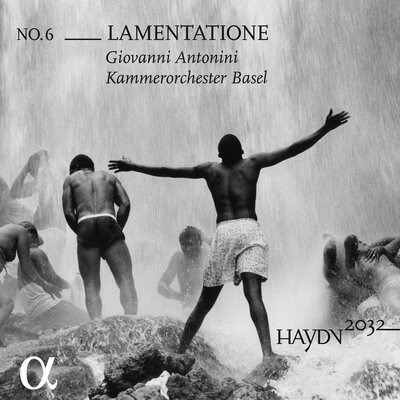
VOL. 6 _LAMENTATIONE
CD
Giovanni Antonini, Basel Chamber Orchestra
Symphonies No. 3, No. 26, No. 30, No. 79
Available at:
Bider&Tanner, Basel
Outhere Music
Download / Stream
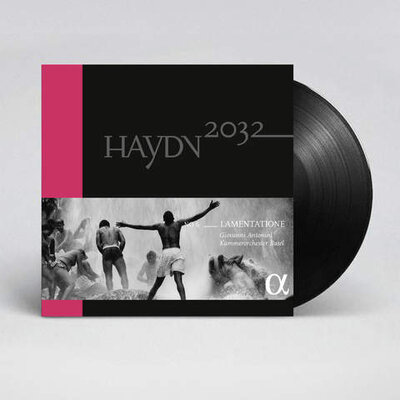
VOL. 6 _LAMENTATIONE
Vinyl-LP with book (download code CD included)
Giovanni Antonini, Basel Chamber Orchestra
Symphonies No. 3, No. 26, No. 30, No. 79
Essay "Variation on Lament, Laughter, Beginning and Ending" by Eva Menasse
Available at:
Bider&Tanner, Basel
Outhere Music


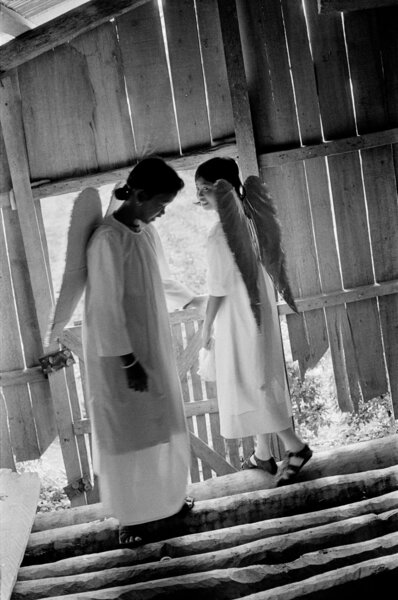
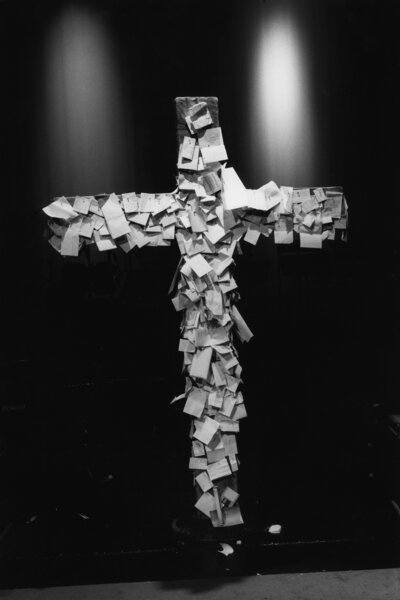
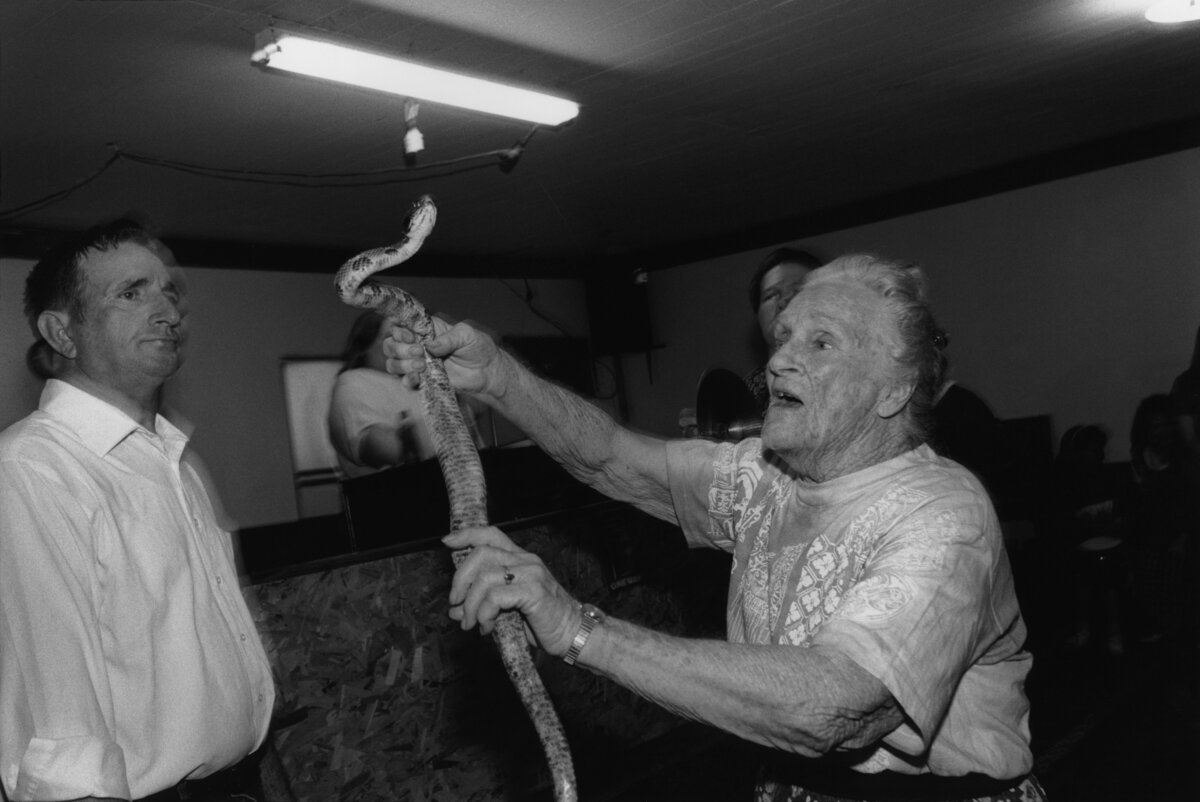
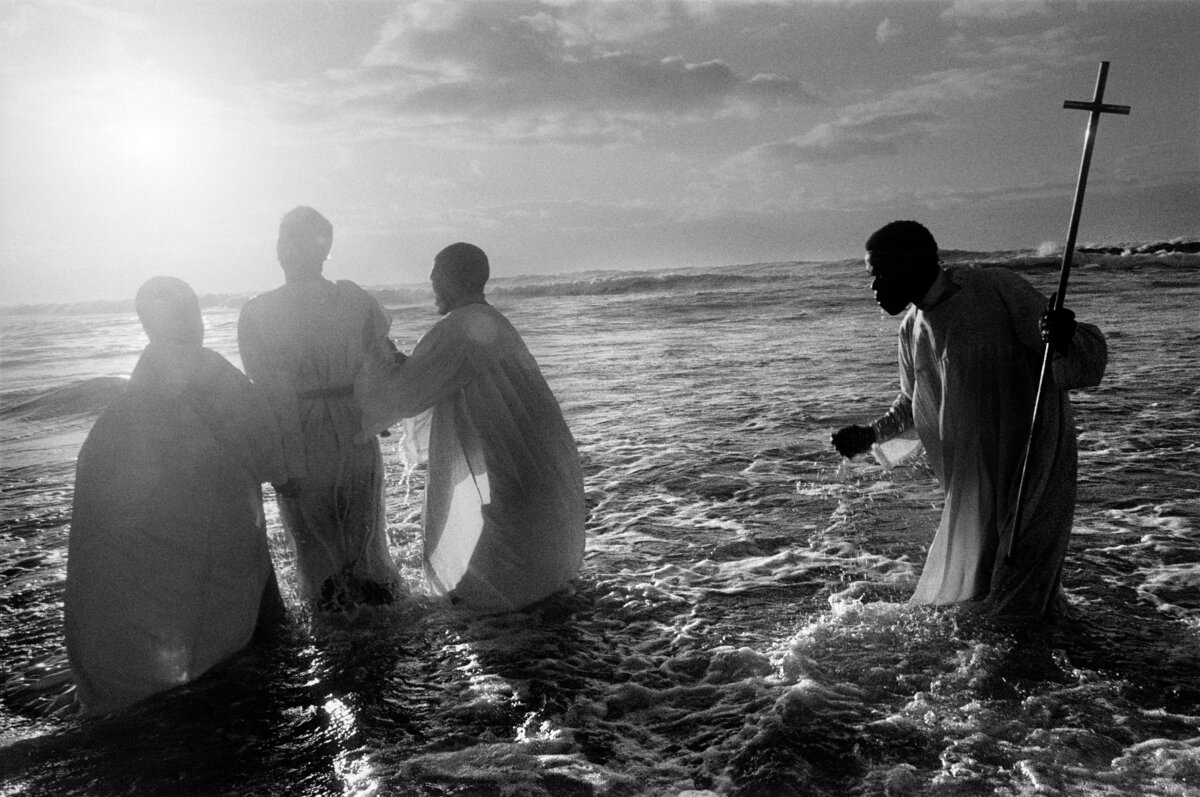
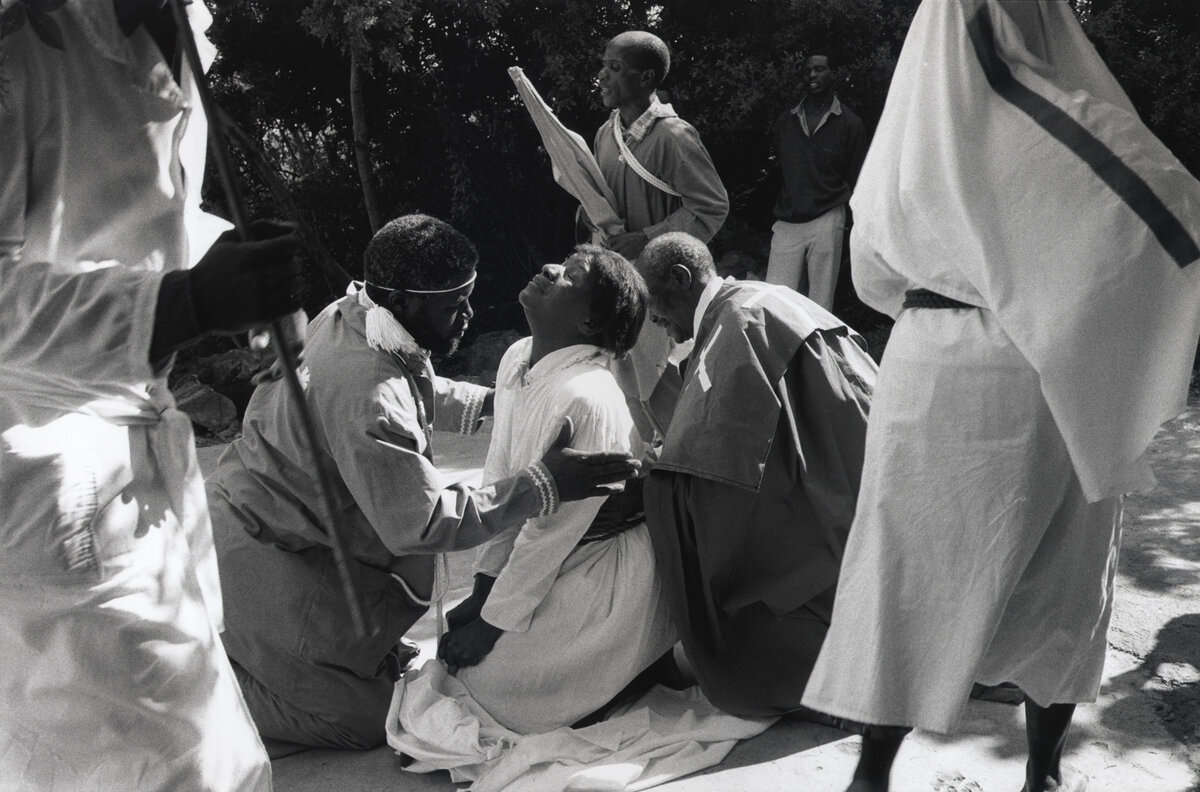
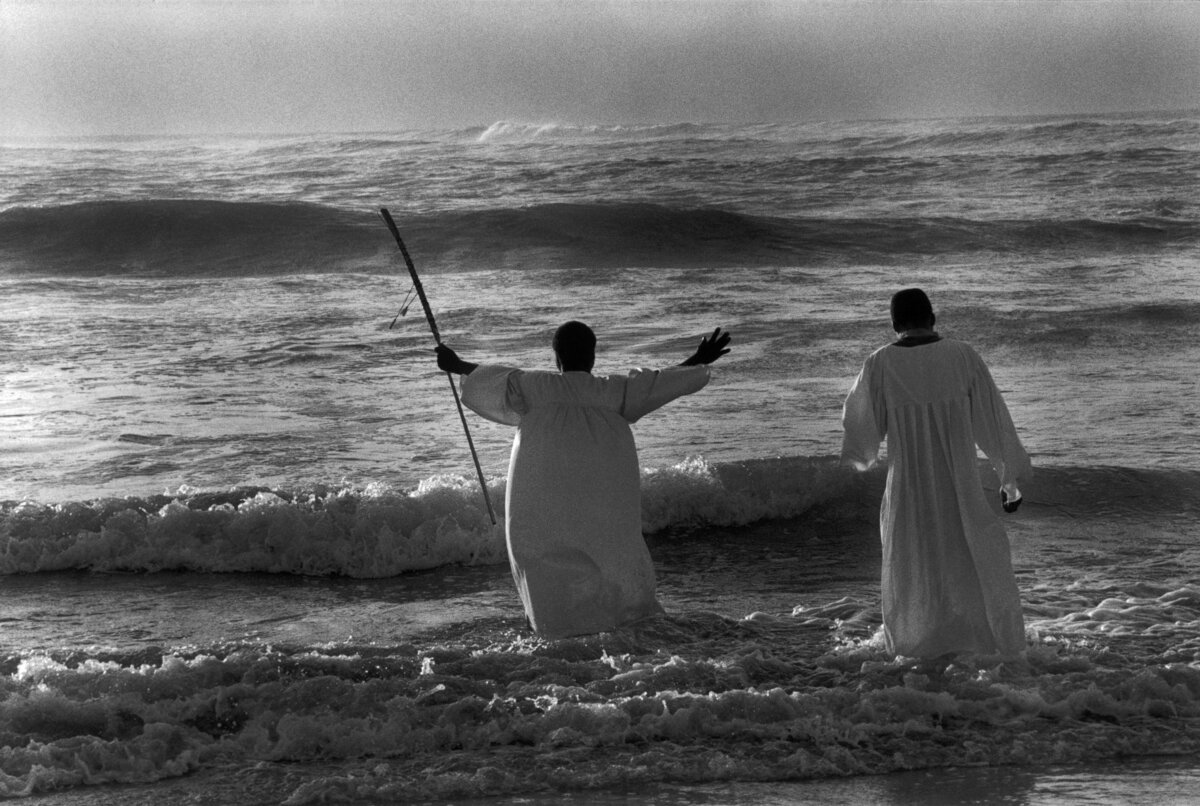
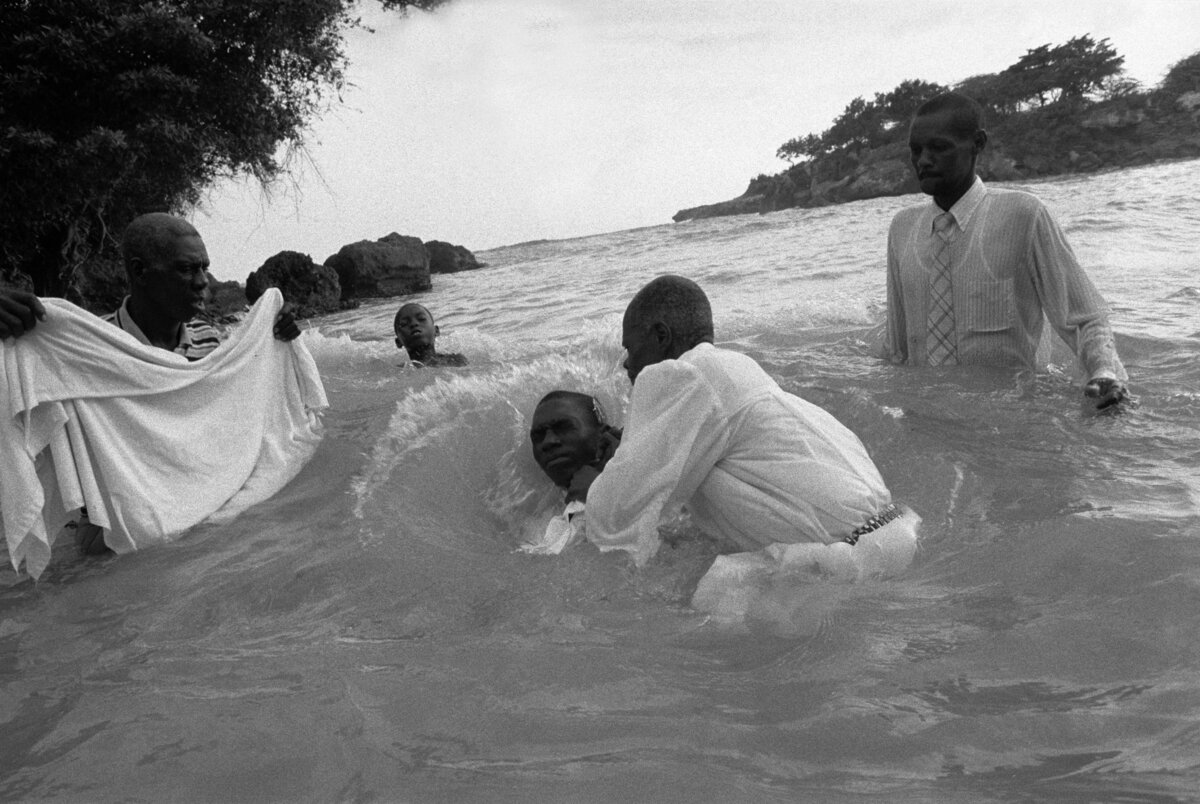

© Abbas / Magnum Photos
Biography
Fotographer, Magnum Photos
Abbas
Fotographer, Magnum Photos
Abbas is an Iranian photographer transplanted in Paris. He has dedicated himself to documenting the political and social life of societies in conflict and has covered wars and revolutions around the world.
While writing a diary during his journeys, Abbas has been interested for the past 40 years in studying religions and their events and consequences throughout the world. To him, the photographer is a writer using light as a pen.
His photographs in black and white express his emotions. Colour represents reality, black and white transcends it.
And then we have Papa. When music sounds like a puppy trying to catch flies in the sunshine and when the space around you seems to spontaneously brighten – it’s Haydn. Or, as the Hungarian writer Péter Esterházy, in this regard proud of his heritage – his forebears were, as mentioned, Haydn’s employers – apparently remarked: ‘When it sounds like good Mozart, it’s always Haydn’. Back then, when people still wore wigs, ‘humour’ was of course still a dignified, complex and intellectual art.
Excerpt from the essay "Variation on Lament, Laughter, Beginning and Ending" by Eva Menasse
The essay "Variation on Lament, Laughter, Beginning and Ending" by Eva Menasse was published in the vinyl edition vol. 6.
Biography
Writer
Eva Menasse
Writer
EVA MENASSE is an Austrian-born writer and essayist, living in Berlin. Menasse had a successful career as a journalist, writing for leading German and Austrian newspapers such as Frankfurter Allgemeine, Süddeutsche Zeitung, and Die Zeit.
She reported on the David Irving Holocaust-denial trial in London in 2000 and wrote a nonfiction book on it, "The Holocaust on Trial". The English translation of her first novel, "Vienna", was shortlisted for the 2007 Independent Foreign Fiction Prize in the UK. Her last novel "Quasikristalle" (Quasicrystals, 2013) was a bestseller in Germany, and was awarded the Heinrich Böll and Jonathan Swift prizes. Her work has been translated into more than ten languages.










